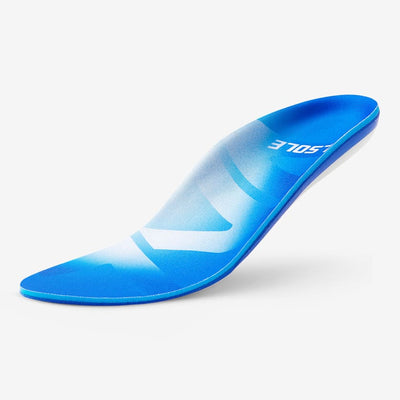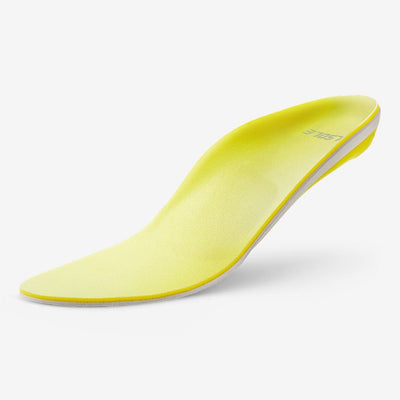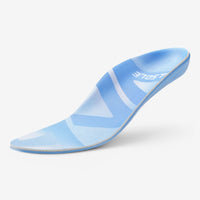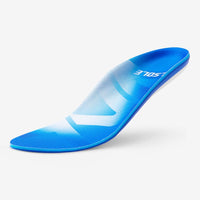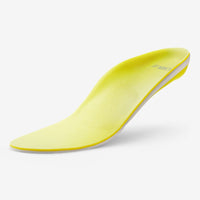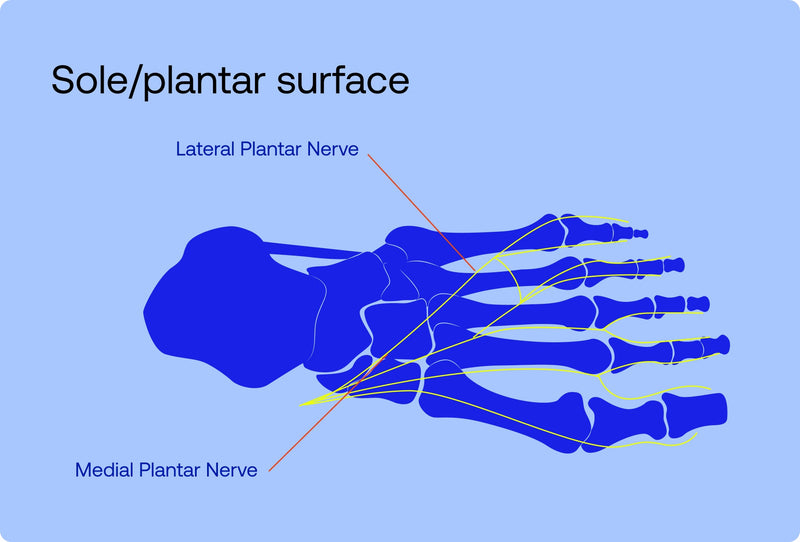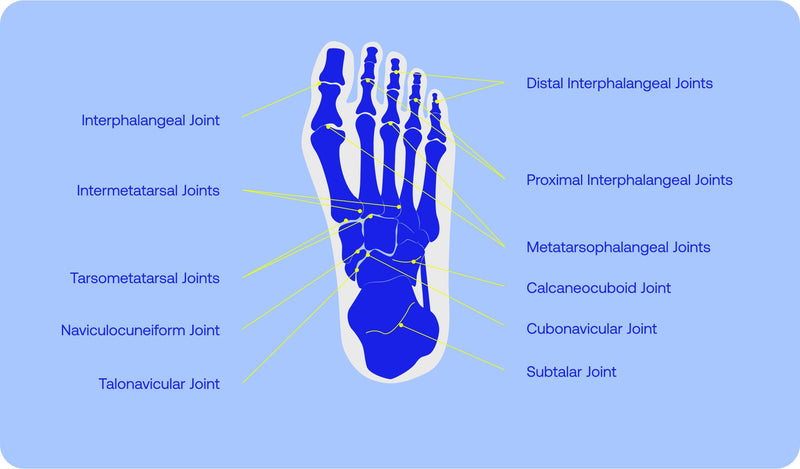How to Care for Your Insoles
Proper maintenance of your insoles is essential for preserving their function, comfort, and durability. With tailored designs addressing heel pain, flat feet, and plantar fasciitis, VALSOLE insoles provide specific solutions for your foot care needs. To maximize their effectiveness and longevity, this guide provides detailed insights into material composition, recommended care routines, storage practices, and environmentally conscious disposal methods. Whether your goal is to alleviate pain or enhance overall comfort, following these guidelines ensures you get the most out of your insoles.
Materials Used in VALSOLE Insoles
Each VALSOLE insole is designed to address specific foot care needs, ensuring you have the right support for your daily activities. The materials used in their construction are chosen for long lasting comfort and use, making them effective for day to day activities.
Materials Breakdown
VALSOLE insoles use a precise combination of components to deliver their unique performance:
-
6% Polyester: Adds breathability and contributes to the resilience of the fabric.
-
19% Polyurethane: Offers additional durability and shock-absorbing properties.
-
30% EVA (Ethylene-Vinyl Acetate): Provides lightweight flexibility and cushioning, essential for reducing impact.
-
45% Polyamides (Nylon): Ensures the structural integrity and stability of the insole, delivering robust arch support.
Tailored Designs for Specific Needs
-
Heel Relief Insole
This model is ideal for individuals suffering from heel spurs or general heel pain. It incorporates extra-thick cushioning to reduce pressure on the heels and an advanced support shell that stabilizes the foot. The ergonomic fit contours to the natural shape of the foot, offering stability and long-lasting comfort. Additionally, the targeted pain relief features include a flat plateau that stabilizes the heel while additional cushioning minimizes nerve impact. -
Stable Support Insole
Designed for individuals with flat feet, the Stable Support model offers robust arch support and keeps the foot aligned during activity. A U-shaped heel cup enhances stability, while larger cushioning pads target areas of discomfort. This insole features thicker materials for added support, promoting balance and alleviating strain on the feet, legs, and lower back. -
Fascia Soothe Insole
This insole is specifically crafted for those with plantar fasciitis or arch pain. The deep cushioning and extended arch pads provide relief from pressure points, while a reinforced shell with striped detailing ensures long-term support and durability. The advanced materials in the Fascia Soothe model enhance shock absorption, reducing the impact on sensitive areas and allowing you to move with ease throughout the day.
Recommended Care Practices
Proper care of your VALSOLE insoles ensures they maintain their function and comfort, extending their lifespan to the expected 6-12 months of regular use. Follow these cleaning and maintenance practices to preserve their condition:
Washing Guidelines
1. Machine Washing
VALSOLE insoles are machine washable for your convenience. Use the following settings for best results:
-
Water Temperature: Always use cold water to avoid damaging the materials. Hot water can warp the EVA foam and nylon shell, reducing their support capabilities.
-
Cycle Type: Select a delicate cycle to minimize agitation, which can wear down the fabric or padding prematurely.
2. Hand Washing
For a gentler approach, or for insoles that require more thorough cleaning:
-
Use a mild detergent and lukewarm water to clean the surface of the insoles.
-
Gently scrub problem areas with a soft brush or cloth to avoid damaging the fabric or foam layers.
-
This method allows targeted cleaning, ensuring tough stains are removed while preserving the insole's integrity.
3. Choosing the Right Cleaning Solution
Avoid harsh chemicals like bleach or industrial cleaners, as these can degrade the EVA foam and fabric. Opt for gentle, non-abrasive soaps or detergents that are safe for synthetic materials.
Drying and Storage
1. Air Drying
After washing, place the insoles in a well-ventilated area and allow them to air dry naturally. Direct exposure to sunlight or heat sources should be avoided, as excessive heat can shrink or weaken the materials.
2. Avoiding Heat Damage
Never use a dryer or place insoles near heaters, as high temperatures can compromise their structural integrity. Proper drying ensures the insole materials retain their elasticity and support.
3. Storage Recommendations
When not in use, store your VALSOLE insoles in a cool, dry place. Excess moisture can encourage the growth of mold and mildew, while high humidity can weaken the materials over time. To maintain their shape, consider storing the insoles flat or keeping them in the shoes they are designed for.
Additional Maintenance Tips
To maximize the lifespan of your VALSOLE insoles, it is important to monitor wear and tear, rotate usage between multiple pairs, and follow specific guidelines for assessing their condition.
Monitoring Wear and Tear
With regular use, insoles naturally degrade over time. To ensure optimal performance:
-
Visual Inspection: Look for visible signs of damage, such as thinning of the cushioning, frayed fabric, or cracks in the nylon shell.
-
Comfort Changes: Pay attention to how your insoles feel. If you experience increased fatigue or discomfort, it may indicate the cushioning has lost its ability to absorb shock effectively.
-
Shape Deformation: Inspect for warping or bending, which can prevent the insole from fitting snugly in your shoe and providing proper support.
Rotational Use
Consider rotating between multiple pairs of VALSOLE insoles for different activities or conditions. For example:
-
Use Heel Relief insoles during extended periods of standing or to manage heel spurs.
-
Switch to Stable Support for high-impact activities or when additional arch support is required.
-
Opt for Fascia Soothe on days when plantar fasciitis pain flares up, as this model provides extended arch support and relief from pressure points.
Rotating your insoles gives each pair time to decompress and recover, maintaining their shape and effectiveness for longer.
Responsible Disposal Guidelines
VALSOLE insoles are designed to address a variety of foot care needs, from managing heel pain and flat feet to alleviating plantar fasciitis symptoms. By following the care and maintenance practices outlined in this guide, you can ensure your insoles provide the comfort, stability, and relief you rely on for their full lifespan.
Proper cleaning, drying, and storage, combined with responsible disposal, not only extend the durability of your insoles but also contribute to a more sustainable approach to foot care.
Recycling Nylon Components
The polyamide (nylon) shells used in VALSOLE insoles are recyclable in many regions. To prepare for recycling:
-
Remove the foam and fabric layers, as these components may not be accepted by standard recycling facilities.
-
Clean the nylon shell thoroughly to ensure it is free from debris or contaminants.
-
Check with local recycling guidelines to confirm nylon acceptance and follow the appropriate procedures.
Disposing of Non-Recyclable Materials
While the foam and fabric layers may not be recyclable, you can still dispose of them responsibly:
-
General Waste: Ensure these components are clean before adding them to your household garbage.
-
Specialized Disposal Programs: Some communities offer dedicated disposal programs for footwear and related materials, which may accept insole components.



